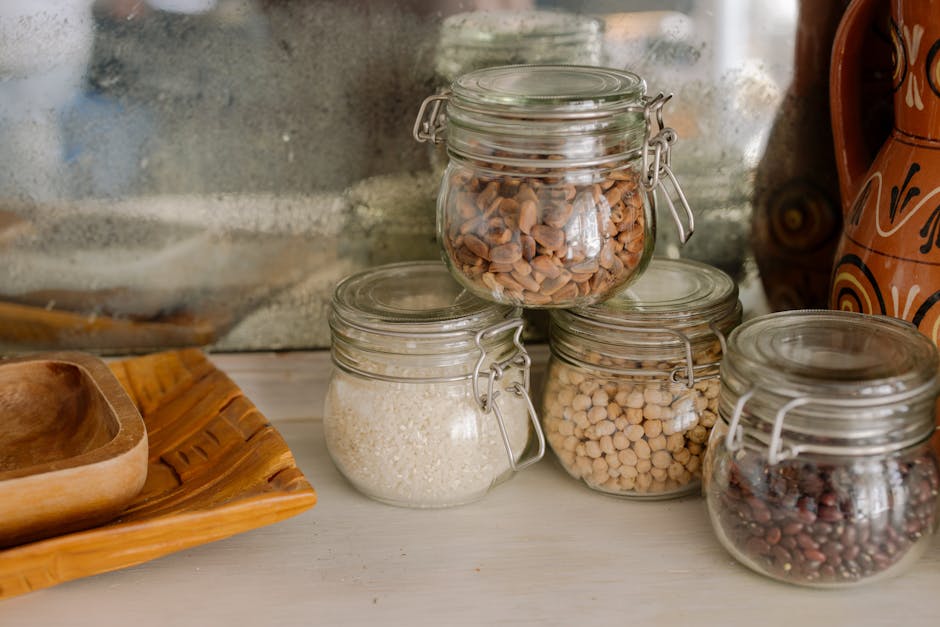Building a pantry inspired by the Depression Era isn’t just nostalgic—it’s practical. These items were chosen for their longevity, versatility, and ability to nourish when times get tough.
Back then, families relied on simple staples that could stretch meals and provide essential nutrients. Today, stocking your pantry similarly can help you prepare for emergencies or just eat more frugally.
Whether you’re a history buff or prepping for the unexpected, these essentials form the backbone of a resilient kitchen. They’re affordable, accessible, and timeless.
From grains to canned goods, each item has a story and a purpose. Let’s dive into the categories that will make your pantry both classic and functional.
By the end, you’ll have a clear list of must-haves that honor the resourcefulness of the past while serving your modern needs.
Ready to build a pantry that stands the test of time? Let’s get started.
Grains and Flours: The Foundation of Every Meal
During the Depression Era, grains and flours were the heart of the pantry, providing the base for countless meals. They were affordable, filling, and easy to store for long periods.
Stocking a variety of these staples allows for flexibility in baking, cooking, and stretching meals without breaking the bank or needing fresh ingredients. Plus, they’re incredibly versatile.
Here are five essential grains and flours that should have a permanent spot on your shelves.
1. All-Purpose Flour – This is your go-to for baking bread, biscuits, and thickening sauces. It’s incredibly versatile and a staple for creating comfort foods that warm both body and soul.
2. Cornmeal – Used for cornbread and as a coating for frying, cornmeal was a Depression Era pantry hero. It’s shelf-stable and brings a slightly sweet, hearty flavor to dishes.
3. Rice – A cheap, easy-to-cook grain that can be paired with almost anything. Rice stretches meals and serves as a filler when meat or vegetables are scarce.
4. Rolled Oats – Perfect for breakfast porridge or baking, oats provide energy and fiber. They were a common staple back then, valued for their simplicity and nutrition.
5. Whole Wheat Flour – A bit denser than all-purpose, whole wheat flour adds nutrients and a nutty flavor to breads and baked goods. It’s a healthier alternative that keeps well when stored properly.
With these grains and flours, you’re well on your way to creating hearty, lasting meals. Next, let’s explore the canned and jarred goods that complement these staples perfectly.
Canned and Jarred Goods: Preserving Nutrients and Flavor
Canning was a lifesaver during the Depression Era, allowing families to store seasonal fruits, vegetables, and proteins for months. These preserved goods added variety and nutrition to otherwise limited diets.
Today, canned and jarred items offer convenience without sacrificing shelf life, making them crucial for any classic pantry. They’re perfect for quick meals and adding flavor when fresh produce isn’t available.
Here are five canned and jarred pantry must-haves inspired by Depression Era wisdom.
6. Canned Beans – Beans are a powerhouse of protein and fiber. Canned varieties save time and still provide the hearty texture and nutrition needed to make meals filling and satisfying.
7. Canned Tomatoes – Essential for sauces, stews, and soups, canned tomatoes bring acidity and richness to dishes. They preserve the taste of summer long after fresh tomatoes are out of season.
8. Canned Corn – Sweet and versatile, canned corn adds texture and flavor to casseroles, soups, and side dishes. It’s a pantry staple that brightens meals with its natural sweetness.
9. Jarred Fruit Preserves – Jams and preserves were often homemade, but store-bought is fine too. They offer a sweet treat and a way to enjoy fruit flavors year-round.
10. Canned Meat (like Spam or Tuna) – Protein was precious, so canned meats were a reliable source. They last long and add much-needed sustenance when fresh meat is scarce or costly.
These preserved goods add flavor, nutrition, and convenience. Now, let’s move on to essential dry goods that keep your pantry stocked with baking and cooking basics.
Dry Goods and Baking Essentials: Versatility in Every Bite
Dry goods were the backbone of Depression Era kitchens, offering long shelf life and multiple uses. From baking to thickening to flavoring, these staples helped families make the most out of minimal ingredients.
Having these on hand ensures you can whip up everything from bread to desserts, and even add texture and richness to soups and sauces.
Here are five dry goods and baking essentials to keep your pantry well rounded.
11. Baking Soda – A vital leavening agent that helps dough rise. Baking soda also has cleaning uses, making it a practical item beyond the kitchen.
12. Baking Powder – Another leavening agent that complements baking soda, perfect for cakes and quick breads. It ensures your baked goods have a light, airy texture.
13. Sugar (White or Brown) – Sugar was precious but necessary for energy and flavor. Brown sugar adds moisture and depth, while white sugar is versatile for baking and preserving.
14. Dried Beans and Lentils – Unlike canned, these require soaking and cooking but last for years. They’re an affordable protein source and great for hearty soups and stews.
15. Powdered Milk – When fresh milk wasn’t accessible, powdered milk provided essential calcium and protein. It’s shelf-stable and useful in baking and cooking alike.
With these dry goods, you’re prepared to bake, cook, and create a variety of meals. Let’s now turn to herbs, spices, and flavor enhancers that bring everything to life.
Herbs, Spices, and Flavorings: Bringing Meals to Life
Even in tough times, flavor mattered. Depression Era pantries often included a modest selection of herbs and spices to make simple ingredients more enjoyable.
These flavorings transform basic staples into comforting, crave-worthy dishes. They’re also easy to stock in small quantities and last a long time when stored properly.
Here are five essential herbs, spices, and flavorings to keep your pantry vibrant and delicious.
16. Salt – The most basic and essential seasoning. Salt not only enhances flavor but was also used for preserving food.
17. Black Pepper – Adds a mild heat and complexity to dishes. It was costly but valued for transforming bland meals into something special.
18. Bay Leaves – Often used in soups and stews, bay leaves add subtle depth and aroma, making simple recipes more fragrant and flavorful.
19. Vinegar – Used for pickling, cleaning, and cooking, vinegar was a multi-purpose pantry staple. It also helps preserve foods and adds acidity to balance flavors.
20. Dried Garlic or Garlic Powder – Fresh garlic wasn’t always available, but dried garlic provided essential savory notes. It’s a powerful flavor enhancer with a long shelf life.
With these flavor boosters, your pantry will never feel bland. Finally, let’s cover the sweeteners, fats, and other cooking essentials that round out a true Depression Era pantry.
Sweeteners, Fats, and Cooking Essentials: The Final Touches
Fats and sweeteners were precious but necessary for energy and flavor. Depression Era pantries included these sparingly but wisely, often stretching smaller amounts across many meals.
Other cooking essentials kept kitchens running smoothly and meals satisfying, even when resources were limited.
Here are five key items from this category to complete your classic pantry.
21. Rendering of Lard or Shortening – Used for frying, baking, and cooking, lard was cheaper than butter and kept well. It adds richness and moisture to recipes.
22. Molasses – A byproduct of sugar production, molasses was an affordable sweetener packed with minerals. It’s great for baking and adding depth to sauces.
23. Honey – A natural sweetener that lasts indefinitely. Honey was prized for its flavor and medicinal properties, making it a pantry treasure.
24. Yeast – Essential for making bread rise. Yeast was a staple for families who baked their own bread regularly, providing sustenance and comfort.
25. Cooking Salt Pork – Salt pork was a staple fatty meat that could be stored without refrigeration. It added flavor and calories to beans, stews, and vegetables.
With these final essentials, your pantry is equipped to handle nearly any recipe or emergency scenario with grace and authenticity.
Building a Depression Era pantry is a wonderful way to connect with history and prepare for the future.
By stocking these 25 essentials, you create a foundation for nourishing, versatile, and economical meals.
Start small, add items over time, and enjoy the peace of mind that comes with a well-prepared pantry.



